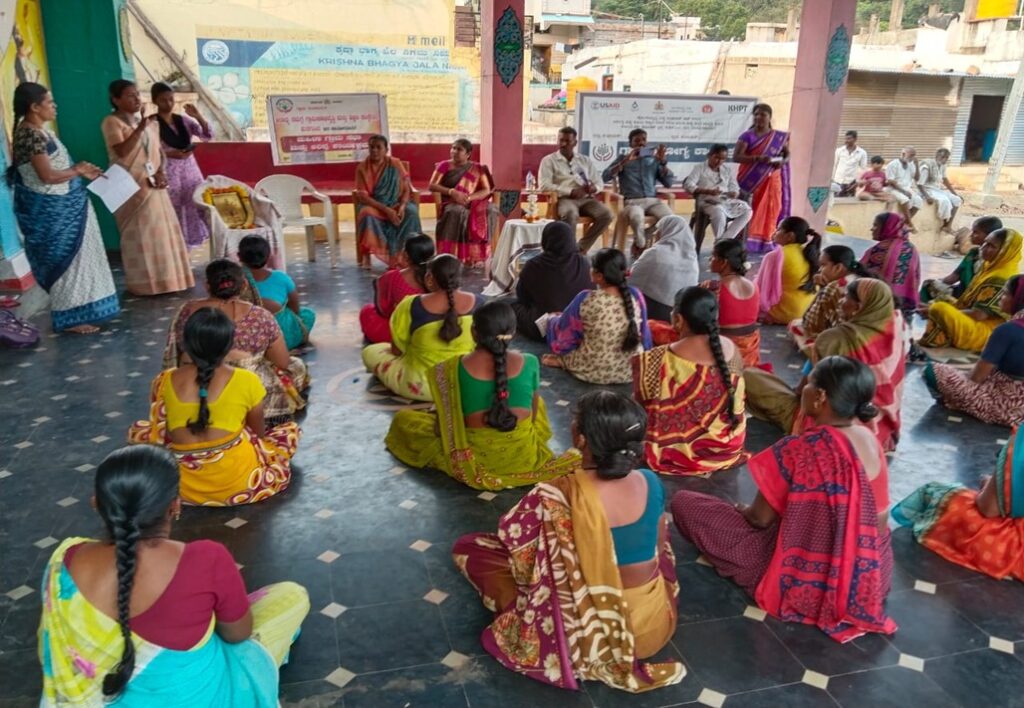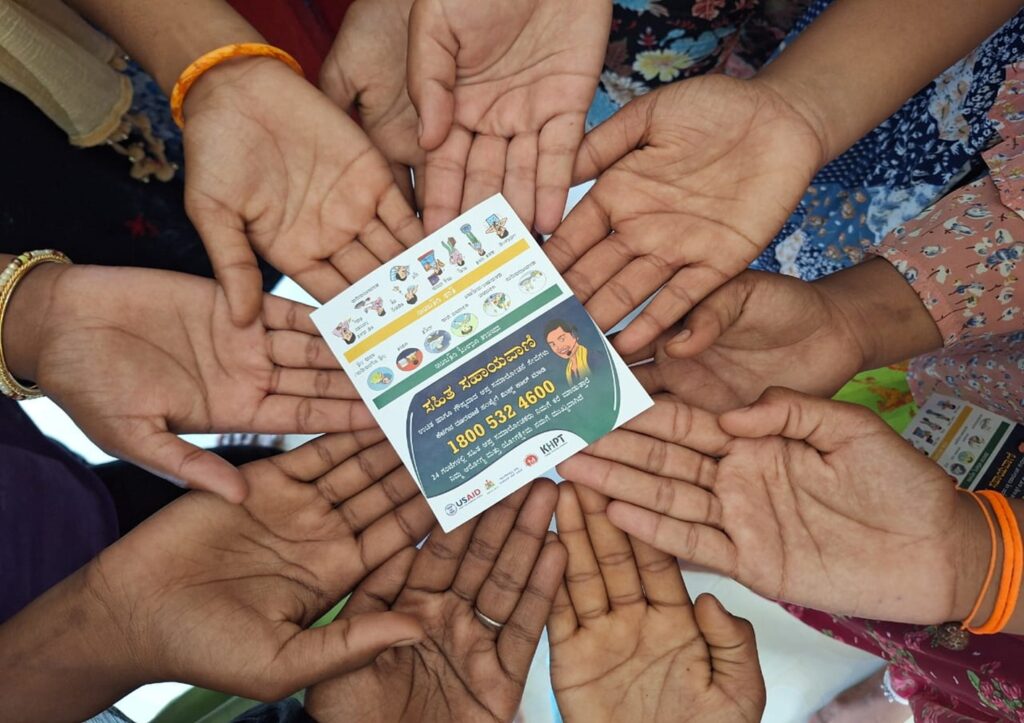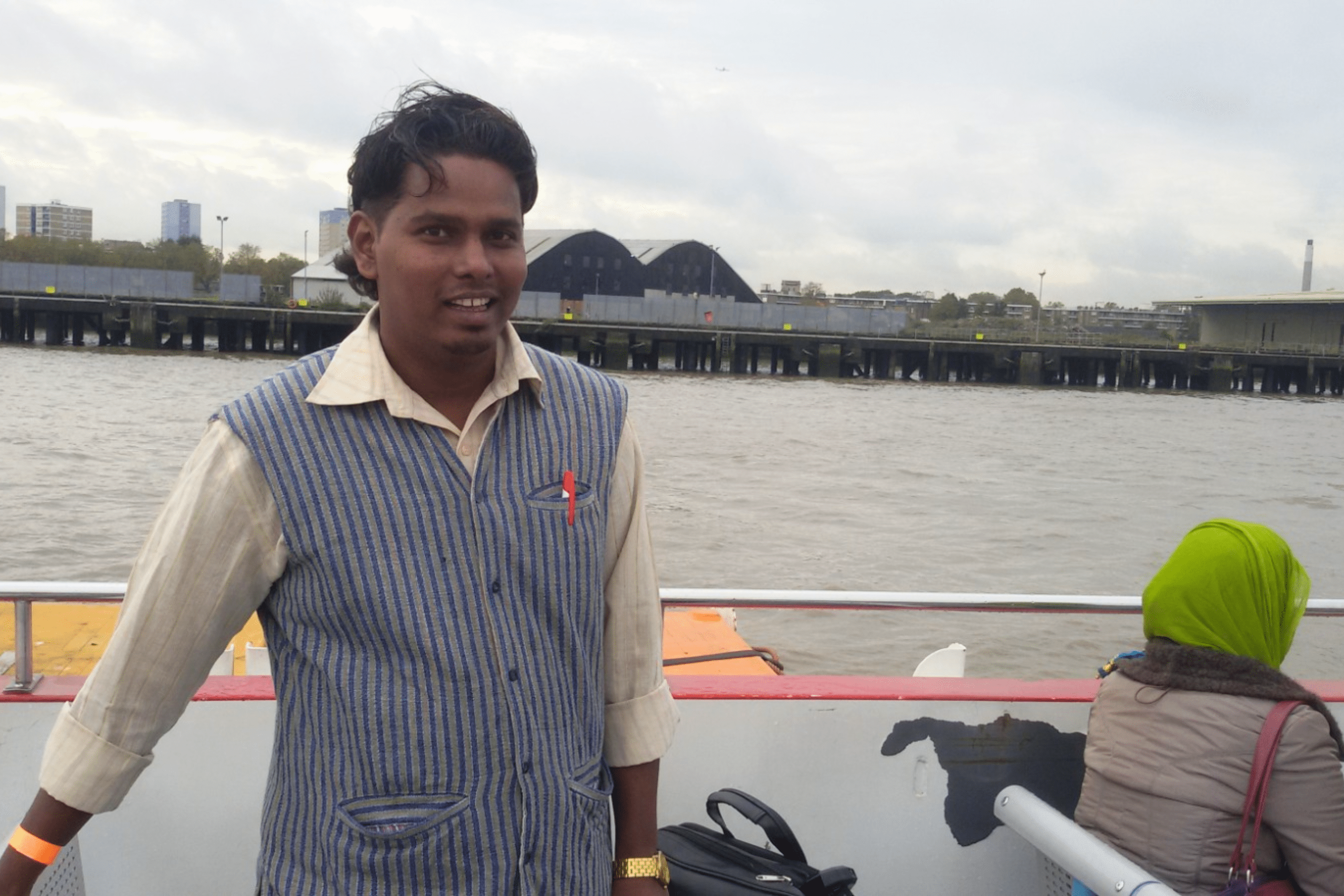An awareness campaign on Mental Health in the Grama Panchayats to encourage community involvement across Karnataka, India.
By Jyoti Koujageri
Imagine waking up every day feeling like you’re carrying a heavy weight on your chest, or having a headache, or lacking motivation for daily activities. This is a daily reality for many, yet the topic remains taboo. It’s time we change that. Have you ever wondered why we hesitate to talk about our feelings, thoughts, psychological issues, or mental health as openly as we discuss physical health or pain? What would happen if we started treating our minds with the same care and concern?
Factually, mental health has been stigmatised, often leading to a lack of understanding and empathy. People may perceive mental health issues as weakness or a personal failing rather than recognising them as legitimate medical conditions. This stigma can discourage individuals from seeking support and treatment. Another factor many people worry about is being labelled or judged for opening up about their struggles. They may fear others will view them as unstable, weak, or unlovable. This fear acts as a barrier to seeking help and discussing mental health issues openly.
Let us look at mental health and one of the initiatives taken by the KHPT to address mental health across Karnataka through Gram Panchayat-led intervention to reduce the burden and stigma associated with it.

About Mental Health and Rural Challenges
‘Mental health is a state of mental well-being that enables people to cope with the stresses of life, realise abilities, learn well, work well, and contribute to the community’. It is an integral component of health and well-being, and it is a basic human right that underpins individual and collective abilities to make decisions and build relationships.
Did you all know that in India, mental health issues are a big concern? According to the World Health Organization, for every 100,000 people, about 2443 years of healthy life are affected by mental health problems. The suicide rate is 21.1 per 100,000 people. It’s also estimated that between 2012 and 2030, mental health conditions will cost the country about USD 1.03 trillion [1]. Studies have found that mental health problems are on the rise in cities compared to rural areas, with up to 80.6% of people in cities experiencing some form of mental illness [2]. This disparity suggests that different factors contribute to the development and exacerbation of mental health disorders in rural and urban areas.
The challenges in rural areas are rooted in a complex interplay of socioeconomic, cultural, and geographic factors. The scarcity of mental health services and professionals in these regions presents a significant obstacle to adequate care. Traditional values and stigma surrounding mental health further inhibit open discussions and help-seeking behaviour, resulting in individuals suffering in silence. Additionally, socioeconomic disparities, such as high poverty rates, limited employment opportunities, and reduced access to education, play a substantial role in exacerbating mental health issues in rural areas. These factors contribute to financial stress, substance abuse, and social isolation, compounding the mental health challenges faced by residents. The inherent isolation of rural living, stemming from limited social activities and reduced access to community support networks, further intensifies feelings of loneliness and depression. Moreover, inadequate public transportation and long distances to healthcare facilities only compound these problems.
To address mental health disparities in rural populations, interventions focus on improving access to mental health services, raising awareness, reducing stigma, and fostering social connections and support systems to ensure that rural residents have the resources and support the community needs to maintain good mental well-being. In this regard, KHPT supported the implementation of the mental health awareness campaign through the Grama Arogya Programme as part of the World Mental Health Day from October 10-17, 2023, which focuses on improving the health and well-being of villagers through the leadership of Grama Panchayats with the objective.
- To enhance awareness, reduce stigma, and promote positive mental health practices among rural communities through gram panchayat involvement and engage community structures participation to identify mental health problems and create awareness about reducing/ eliminating the stigma
- To ensure access to mental health information and support for improved well-being through Sahita Careline/Tele Manas
A Grama Panchayats initiative
The “Mental Health Is a Universal Human Right” campaign in Karnataka aimed to raise awareness about mental health and provide services to rural communities through Gram Panchayats. The campaign involved collaboration between the Department of RDPR, the Health Department, and KHPT. All 5957 Gram Panchayats were officially reminded to conduct the campaign. The campaign activities, organized under GP leadership, targeted various groups such as the Mahatma Gandhi National Rural Employment Guarantee Act (MGNREGA) group, Self-help group, School children, Youths and Adolescents, Community structures, Local Leaders, NGOs/CBOs, Parents and caregivers, and the elderly population. Awareness programs were conducted using various methods, and helpline details were publicised at campaigns.

Key highlights from the Initiative
- In Koppal district, collaborative mental health awareness and health screening camps were held with various local organisations, including a program celebrating International Girl Child Day.
- Adolescent girls in Mysore’s Menasi Katanahalli Degree College received sessions on anaemia, menstrual hygiene, and mental health, leading to anaemia screenings and referrals.
- Vadigera Gram Panchayat hosted a mental health program covering communicable diseases, TB, and menstrual hygiene.
- In Heggada Devana Kote Taluk, a health check-up camp for DB Kuppe Forest residents included diabetes, hypertension, and anaemia screenings.
- Chamarajanagar district saw a mental health awareness rally involving 300 participants and district officials.
- At the GP level, jingles on Mental health are shared through the Swatchh Vahini vehicle.
Campaign Impact
The mental health campaign spanned 31 districts across Karnataka, engaging 5,957 GPs.
1,046 GPs actively participated, and a total of 1,098 activities were conducted, reaching 61,021 individuals.
Through the Sahita Careline, 974 people were screened with a mental health checklist, identifying 319 individuals with mental health issues, and 14 were referred for further management of mental or medical illnesses.
The mentioned Sahita Careline numbers represent 31 districts in Karnataka from October to December 2023. These specific months were chosen as three months because mental health is a stigmatised issue in the rural community, and individuals may require some time to feel comfortable reaching out to seek support for their mental health. The data suggests that approximately one-third of the screened individuals were found to have mental health issues.
Learnings from the Campaign
- Due to stigma or fear, people may delay seeking counselling support or accurate diagnosis and treatment
- Continuous awareness programmes are needed in the form of Jathas, campaigns, at Grama Sabha, or other interactive activities for the community through the Grama Panchayats
- Active involvement of the GPs would help the community understand and access the mental health services available at a local level or the district
- Information materials for the rural community, such as Wall painting, Posters, and regular announcements through swatch vahini vehicle about the mental health topic with important information and services may be developed or displayed to help them further engage with the topic or call for seeking support
Voices from the ground
“Nowadays, children of our age are under mental pressure due to social media and more mobile usage; they are immersed in daily confusion, less interested in studies, and depressed. Most students fall into mental confusion, which will also affect their daily functioning. We appreciate this program bringing to our notice. The fact that the helpline provides them with emotional support in current circumstances is beneficial”.
-Kirthana, Secondary PUC Government Pre-Graduation College, Piriyapatna
“Women are frequently the victims of mental torment because of chronic illnesses, familial issues, stress, domestic abuse, and a lack of avenues to share their pain. They ignore their suffering and go about their everyday lives. This program is very helpful, as they told me that there is a confidential mental health care line to listen to our mental pain and provide solutions. On behalf of our SHG federation, thank you”.
– Ratnamma, Sanjeevini Federation of Women Self-Help Societies, Mysuru District
“Children today frequently experience confusion; they are unable to discuss these issues with their parents or teachers, which leads to mental depression. They are also plagued by exam stress and anxiety. For these reasons, they are grateful to the Grama Panchayat and KHPT team for alerting students to the helpline, which will be extremely beneficial in resolving these issues”.
-Shri Nagaraj Aras, Principal, Government Boys Pre-Graduation College
“Everyone should be physically and mentally fit to live a good life. Mental health can be managed. It is appropriate to treat mental problems in the same way as physical problems are treated.”
-Geetha Huededa, District In-charge, Chamarajanagar
Recommendations
- Using community structures to identify mental health problems among community and create awareness about reducing or eliminating stigma, and collaborating with district and taluk level mental health service teams to serve the community with necessary information
- Encouraging mental health requires the setting up of living conditions and environments that foster mental well-being, enabling individuals to embrace and sustain healthy lifestyles, GPs with the support of Community structures may be possible
- Social support for elderly people needs to be strengthened at the GP level
- Mental health-related awareness Programmes targeting local people, migrants, and people affected by disasters and gender-based violence need to be established
- Create linkages to the Sahita Careline/Tele Manas/District mental health program for confidential counselling and psychosocial support for people who have experienced mental health issues and psychosocial counselling
- Minimizing mental health issues is enhancing the management of mental disorders within primary healthcare, with Gram Panchayats taking the lead in initiating referrals for individuals in need
Grama Panchayats are key in mobilising, shaping, and supporting mental health actions in their communities. GPs can and should work with all key stakeholders to ensure quality mental health services are developed, resourced, and tailored to meet local mental health needs. GPs have the potential to organise services to expand coverage and develop promotion and prevention programs that target the social and structural determinants of mental health. Educating the communities about the early symptoms and treatability of disorders, as well as encouraging the public to seek mental healthcare, will help break the longstanding stigma. Removing the stigma around mental illness and encouraging open conversations about mental health is a sign of strength. Together, we can create a mentally healthy society.
References
- https://www.who.int/india/health-topics/mental-health
- Impact of rapid urbanization on women’s mental health: a review of literature. Kar SK, Somani A. https://www.researchgate.net/profile/Sujita-Kar/publication/277009398_Impact_of_rapid_urbanization_on_women%27s_mental_health_a_review_of_literature/links/555de3bb08ae9963a113bf8e/Impact-of-rapid-urbanization-on-womens-mental-health-a-review-of-literature.pdf Psychiatry J. 2015;18:171–176. [Google Scholar]


